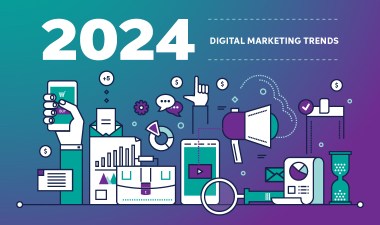One year ago this month, Google transitioned all website insights from its longstanding Universal Analytics (UA) tool to Google Analytics 4. “New and improved” was the promise. GA4 would offer users next-level functionality and, yes, superior insights.
So how’s that going?
Initial GA4 reviews were downright scathing, and we’re not just talking about Reddit. Thought leadership pieces with titles like “Using Google Analytics 4 Flaws to Your Advantage” and “How to Make GA4 Actually, Like, Good” began sprouting up like weeds. Marketers posted wistful tributes to Universal Analytics on social media; some even held tongue-in-cheek funerals for UA.
Here at Hammer, we checked ourselves. Was our meh response to GA4 maybe just misplaced resistance to change, or migration learning curve burnout? Summer of 2023 turned to fall, though, and the writing was on the wall: Compared to our (dearly departed) Universal Analytics, some core functions of GA4 are, indeed, objectively lacking, or missing altogether. A few of GA4’s most glaring limitations:

No real-time data
GA4 data is processed in chunks and therefore delayed; it generally is not reliable until 48 hours after the fact. This is a huge break from Universal Analytics’ instantaneous updates that allowed minute-to-minute monitoring, and therefore real-time experimentation and pivots.
No pre-2023 data
On July 1st of this year, Google deleted all UA data for good. Only a relatively small number of users had exported their UA data to GA4 before the deadline, largely because, without Google Analytics 360 (rare among website owners), migration was labor intensive. As such, most websites now have no record of activity before 2023.
No ID tracking
Universal Analytics gave users unique identifiers that let marketers track their behavior across sessions and devices. These are missing from GA4 – a win for privacy, but the equivalent of a missing appendage for marketers who’d learned to deftly leverage this feature.
Banned in Europe
Passed in 2018, Europe’s General Data Protection Regulation (GDPR) restricts how user data can be collected, stored, and transferred. There’s concern in Europe about the fact that GA4 transfers data to U.S. servers, which may not offer the level of data protection required by GDPR. Although Google has made changes to GA4 to address privacy concerns (for example, users can disable collection of specific data points and IP addresses from EU users), their efforts haven’t sufficiently quelled concerns from European regulators.
THE GOOD NEWS
Ten, eight, even just six months ago, the website analytics outlook was bleak. However, the last few months have shed light on a new and promising realization:
Google isn’t the only game in town.
You read that correctly. Tepid responses to GA4 have revealed and fueled a growing number of GA4 alternatives doing what felt impossible just a year back: pulling market share from Google.
Some social proof: Google accounted for 86% of traffic analysis tool use in June of 2023; as of this past June that number is down to 83.2%[1]. Now, to be clear, each of these GA4 alternatives comes with its own respective drawbacks. However, by and large they also come with more security and more efficiency than GA4.
And so, without further ado, the GA4 alternatives finding their place in the sun in 2024:
- Piwik PRO – popular among users and boasting a 4.6 out of 5 stars rating on G2, Piwik gets high marks for several things: GDPR and HIPAA compliance, strong customer support (during implementation and onboarding especially), and a clear and intuitive interface. Slow page loading and challenges integrating with other tools are two recurring gripes among users, but overall, this option is living up to its name.
- Fathom Analytics – value simplicity over scope? Fathom Analytics might be for you. Easy on the eyes and offering the real-time insights many GA4 users crave, Fathom is also privacy-centric, and compliant with all privacy laws. In recent months Fathom has made much of the fact that it never deletes your data – a response to the loss of Universal Analytics data history deletion that’s left many businesses on edge. Like Piwik PRO, Fathom Analytics has a 4.6 out of 5 star rating.
- Heap – rated 8.1 out of 10 on Trust Radius, Heap loyalists point to its easy-to-use interface and versatility that makes it applicable to a wide range of industries and use cases. Heap’s autocapture tool for clickstream data is a standout feature, and the platform has a shallow learning curve (its more advanced features notwithstanding). Like Fathom Analytics, Heap can be tough to integrate with other tools, though, making it potentially best-suited for standalone use.
- Clicky – rated 4.5 out of 5 stars (with 70% of users giving a 5-star rating), Clicky aficionados appreciate its coveted real-time traffic stats, wide swath of features, and simple setup – though some question its value relative to pricing. Clicky is also noted to have some integration limitations, though seemingly to a lesser extent than Piwik PRO and Heap. User interface also earns some criticism.
- Adobe Analytics – Adobe Analytics has the lowest marks of all of these alternatives (4.1 out of 5 stars); however, its ability to readily integrate with the larger Adobe ecosystem as part of the Adobe Marketing Cloud makes it a shoo-in for some businesses nonetheless. So why the lower score compared to the others? Some users feel the learning curve is steep and that the platforms feels unnecessarily complex overall.
Need expert help in making this critical decision – or want experts to decide and handle website analytics entirely on your brand’s behalf? Contact Hammer Marketing for a free consultation. Our team will choose the website analytics tool that makes the most sense for your business’s profile and preferences, and which will lead to actionable data – and results.
[1] https://w3techs.com/technologies/history_overview/traffic_analysis

Fed Up with GA4? You Have Options.
One year ago this month, Google transitioned all website insights from its longstanding Universal...

Can AI Boost Your Website’s SEO? Google Has Some Thoughts…
You’ve probably been served an ad, received an email, or seen a blog post...

Going, Going, Gone: Backing Up Universal Analytics Data Before It Disappears on July 1st
In July of last year, Google transitioned website owners from its widely-used Universal Analytics...

Mid-Market Companies, Behold: 5 In-Reach Strategies for Enhancing Website Visibility
Let’s step back in time, shall we? To the early aughts, when websites were...

Selling Too Hard on TikTok? 8 Tips for Avoiding TikTok Shop Overkill
TikTok Shop, the social media platform’s e-commerce offering, launched in the U.S. last September, letting...

Our Take on 2023’s Digital Marketing Trends – and Predictions for 2024
Change happens at warp speed in digital marketing. Even “old reliables” – Google Analytics and...



